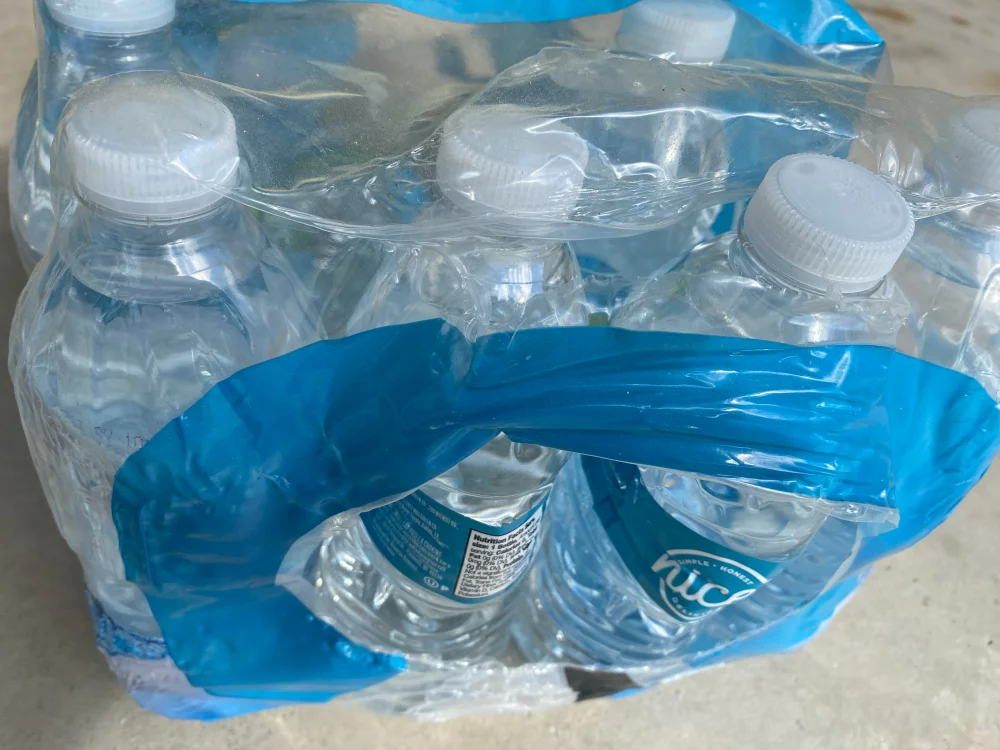There’s been a lot of talk lately about bisphenol-A, better known as BPA. The industrial chemical used in the making of plastic since the 1960s has come under scrutiny for its potential harmful effects. Found in water bottles, baby bottles, utensils, dental sealants and register receipts, the chemical has been found to be an endocrine disrupter, linked to chronic diseases, including diabetes and asthma, and problems with reproductive function.
While the American Chemistry Council (ACC) continues to assert that BPA is safe, the FDA banned the use of BPA in bottles for infants in 2012, following similar bans in Canada and Europe.
In recent years, bisphenol-S or BSA has been embraced as a replacement for BPA. However, a study by Dr. Cheryl Watson, a University of Texas Medical Branch professor in Galveston, and graduate student René Viñas published in January, concludes that BPS appears to create the same problems as BPA. Watson said even low doses of this “xenoestrogen” were found to have an effect on animal cells.
“With these kinds of chemicals, low doses can actually have bigger effects than large doses,” Watson said.
The presence of both BPA and BPS is pervasive. A Centers for Disease Control (CDC) test of more than 2,000 people in the U.S. in 2003-2004 found BPA in the urine of 93 percent of participants. Likewise, a 2012 test conducted by the New York State Department of Health found BPS in 97 percent of urine samples taken from residents of Albany, New York.
So how can you lessen the risks associated with exposure to these chemicals? Here are common carriers and tips to avoid them:
• Plastic baby bottles. Controversy surrounding BPA in containers used by children has been brewing for years. When the U.S. banned the use of BPA in bottles for infants and cups for toddlers in 2012, major manufacturers of these items had already stopped using the chemical in order to boost consumer confidence.
Alternative: Until it’s clear the industry is using a safe replacement to BPA, switch to glass or stainless steel containers.
• Baby food containers. Some glass jars of baby food feature lids with epoxy resin liners, known to contain BPA. Some liquid formula is sold in metal containers with epoxy liners.
Alternative: Buy baby food in containers made of number 1 or 2 plastic. Formula sold in powder form is considered less likely to be infiltrated by BPA, even if it\’s sold in a resin-lined can.
• Plastic food containers. BPA is used to make polycarbonate plastic, commonly used for reusable water bottles. According to the U.S. Department of Health and Human Services and the Food and Drug Administration, containers with the Resin Identification Codes 1, 2, 4, 5 and 6 are unlikely to contain BPA. Some marked with number 3 and 7 may contain BPA.
Alternative: Use stainless steel or glass bottles to carry drinking water. Instead of using 5-gallon water bottles (the hard plastic jugs used for water coolers), switch to a water filter for the tap, or use glass jugs for filling up at water machines. Given the uncertainty that’s still looming over the safety of plastic containers, some people are switching to glass, stainless steel, paper and ceramic containers to store food.
• Canned food and drinks. BPA is known to be in the epoxy resin liners of canned foods and aluminum beverage containers. Studies have shown that the migration of BPA into the food may be higher for acidic foods, like tomato sauce. But there are many more foods being contaminated. According to a 2010 Breast Cancer Fund study, canned-food products with the highest levels of BPA are coconut milk, soups, meats, vegetables, meals (such as pasta dishes), beans, canned juices and canned fish. However, the study showed that even cans labeled BPA-free and alternative packaging such as Tetra-paks or polypropylene containers with epoxy-lined lids contained BPA.
Alternative: Use fresh produce over packaged foods. While only small amounts of BPA were found in soda liners, higher amounts were found in beer. Switch to glass containers for beverages when available.
For those who rely on canned foods for meal preparation, increasingly companies are looking for ways to rid their products of BPA. Eden Foods, went BPA-free in 1999 and has been using oleoresin, a mixture of oil and resin extracted from plants such as pine or balsam fir. Amy’s went BPA-free last year. Look for NB on the bottom of their cans, signifying non-BPA containers. Muir Glen is replacing BPA-based liners with food-grade vinyl, which has been used for packaging for more than 20 years. Whole Foods is working with suppliers to transition to BPA-free products.
• Heated containers. Heat can cause additional leaching of BPA when present.
Alternative: As a general rule, don’t heat food in plastic containers in the microwave. Use glass or ceramic containers containers. Don’t put hot food in plastic containers. The National Toxicology Program also advises against washing polycarbonate plastics (number 7) in the dishwasher using harsh detergents.
• Old dishware. Scratched or worn plastic can cause additional leaching of chemicals.
Alternative: Recycle worn or scratched plastic dishware.
• Utensils. Some utensils are made with a number 3 plastic that has been known to contain BPA.
Alternatives: Carry your own stainless steel or bamboo utensils when you go out.
• Eating Out. You don’t know how much of your meal’s ingredients came out of a can or how it was prepared.
Alternative: Eat fresh-prepared meals at home more often.
•Cash Register Receipts.
Many of these are coated with BPA. You won\’t absorb it through your skin, but if your hands touch your food or mouth, you\’ll transfer the BPA.
Alternative: Say no to receipts, or accept them by email, it\’s the greener option anyway.
For More Information See These Sources:
- U.S. Department of Health and Human Services: http://www.hhs.gov/safety/bpa/
- Consumer Reports 2009 Study: http://www.consumerreports.org/cro/magazine-archive/december-2009/food/bpa/overview/bisphenol-a-ov.htm
- Mayo Clinic: http://www.mayoclinic.com/health/bpa/AN01955
- Breast Cancer Fund: http://www.breastcancerfund.org/reduce-your-risk/tips/avoid-bpa.html
- Inspiration Green\’s List of BPA-lined cans: http://inspirationgreen.com/bpa-lined-cans.html
